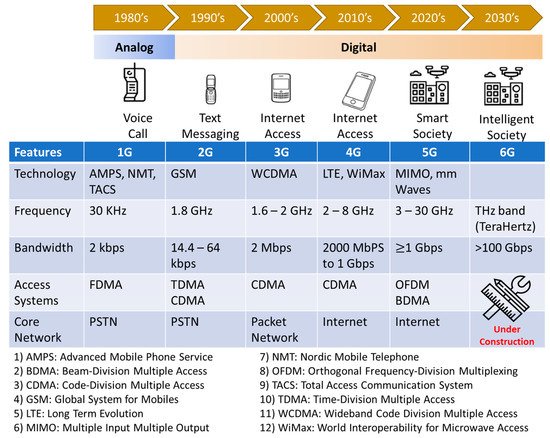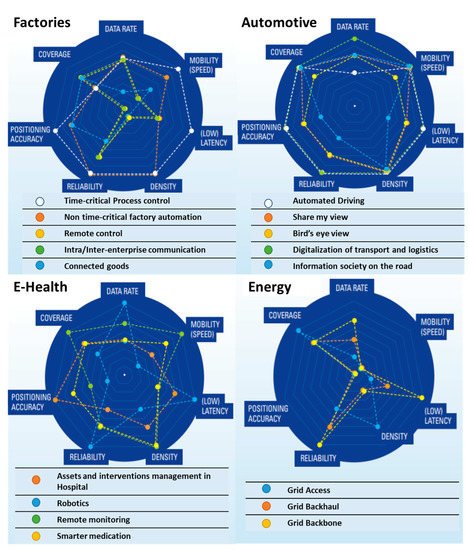For many applications deployed in manufacturing networks, communication latency has been a significant barrier. Despite the constant development of improved communication protocols and standards during Industry 4.0, the latency problem persists, lowering quality of services (QoS) and quality of experience (QoE). Tactile internet (TI), with its high availability, security, and ultra-low latency, will add a new dimension to human-machine interaction (HMI) by enabling haptic and tactile sensations. The tactile internet (TI) is a cutting-edge technology that uses 5G and beyond (B5G) communications to enable real-time interaction of haptic data over the internet between tactile ends. This emerging TI technology is regarded as the next evolutionary step for the Internet of Things (IoT) and is expected to bring about massive changes towards Society 5.0 and to address complex issues in current society. To that end, the 5G mobile communication systems will support the TI at the wireless edge. As a result, TI can be used as a backbone for delay mitigation in conjunction with 5G networks, allowing for ultra-reliable low latency applications like Smart Manufacturing, virtual reality, and augmented reality. Consequently, the purpose of this paper is to present the current state of 5G and TI, as well as the challenges and future trends for 5G networks beyond 2021, as well as a conceptual framework for integrating 5G and TI into existing industrial case studies, with a focus on the design aspects and layers of TI, such as the master, network, and slave layers. Finally, the key publications focused on the key enabling technologies of TI are summarized and the beyond 5G era towards Society 5.0 based on cyber-physical systems is discussed.
- tactile internet
- Smart Manufacturing
- 5G
- Industry 4.0
1. Evolution of Network Technologies
-
Global competition: as revenues from the traditional model of selling products are squeezed, manufacturers must find ways to become more efficient on a continuous basis in order to compete at lower prices or adopt new business models.
-
New consumer trends: consumers are increasingly expecting “on-demand” products that are fully customizable, putting pressure on manufacturers to reduce cycle times and create unique products while maintaining efficiencies.
-
Skills shortages in the workforce: the introduction of new technologies necessitates the acquisition of new skills, and the manufacturing industry is struggling to attract new talent, with an estimated 2.4 million unfilled positions (or 15% of the total workforce) in the US alone by 2028 [2].

-
1G–voice call: the 1G mobile network was put into use in the early 1980s. It has voice communication and limited data transmission capabilities.
-
2G–message passing: in the 1990s, the 2G mobile network improved voice quality, data security, and data capacity and provided limited data capabilities through the use of GSM (global system for mobile communications) standard circuit switching.
-
3G–multimedia, text, internet: the first commercial 3G service was introduced in 2003, including mobile internet access, fixed wireless access, and video calling.
-
4G–real-time data, car navigation, video sharing: 4G was launched in 2008, making full use of all IP networking and relying entirely on packet switching. Its data transmission speed is 10× compared with 3G network.
-
5G–is the most recent generation of mobile technology, and it differs from previous generations in that it is not simply a speed increase over 4G. It is more flexible than previous generations of cellular technology because it is software-based. Customers will be able to use different characteristics of 5G tailored to meet the requirements of specific applications, rather than one network that fits all.
-
6G–is the next generation of mobile technology also known as “Next G”, which is still under development. Currently, initiatives are starting to form and research projects are set up in an attempt to begin the design, development, and experimentation on the required network infrastructure to support this new mobile network generation. According to recent research [6], China has already set up two working works. Similarly, Japan has also invested $2 billion (two billion US dollars) in order to support research activities for 6G. Europe has also approved the research of 6G under the Horizon 2020 plan. North America has also begun working on the initiative called “Next G”, mainly at a university level.
-
Mobile internet: suited for static or streaming content, video with limited resolution, web browsing
-
Internet of Things (IoT): machine-to-machine (M2M) communication, billions of interconnected smart devices, low rate, latency, secure and reliable
-
Tactile internet: human-to-machine communication (H2M), ultra-low latency, ultra-high availability, end-to-end security
2. Vision of Tactile Internet

-
Ultra-low latency; 1 ms and below latency (as in round-trip-time/round-trip delay)
-
Ultra-high availability; 99.999% availability
-
Ultra-secure end-to-end (E2E) communications
-
Persistent very high bandwidth capability (>1 Gbps)
-
Bandwidth: data rates of 100 MB/s on average
-
Capacity: up to 1 million devices per square kilometer
-
Reliability: 99.999% network reliability
-
Mobility: Seamless transfer between radio nodes up to 500 km/h
-
Battery Life: up to ten (10) years battery life for low power (IoT) devices
3. Challenges and Motivation-Existing Cellular Technologies Cannot Support Tactile Internet Yet
| Use Case | Availability | Cycle Time | Payload Size | Number of Devices | Typical Service Area | |
|---|---|---|---|---|---|---|
| Motion control |
Printing machine | >99.9999% | <2 ms | 20 bytes | 100 | 100 m × 100 m × 30 m |
| Machine tool | >99.9999% | <0.5 ms | 50 bytes | ~20 | 15 m × 15 m × 15 m | |
| Packaging machine | >99.9999% | <1 ms | 40 bytes | ~50 | 10 m × 5 m × 3 m | |
| Mobile robots | Cooperative motion control | >99.9999% | 1 ms | 40–250 bytes | 100 | <1 km2 |
| Video-operated remote control | >99.9999% | 10–100 ms | 15–150 kbytes | 100 | <1 km2 | |
| Mobile control panels with safety functions |
Assembly robots or milling machines |
>99.9999% | 4–8 ms | 40–250 bytes | 4 | 10 m × 10 m |
| Mobile cranes | >99.9999% | 12 ms | 40–250 bytes | 2 | 40 m × 60 m | |
| Process automation (process monitoring) |
>99.99% | >50 ms | Varies | 10,000 devices per km2 | ||

| Term | Definition | Source |
|---|---|---|
| Internet of Things (IoT) | IoT can be realized as a new form of network created by physical devices. In this type of network, the physical devices are called things. Each thing is embedded with sensing systems and associated software which enable the connection and data exchange with other things over the internet. | [27] |
| Tactile internet (IT) | According to the International Telecommunication Union (ITU), TI can be realized as the next generation of internet network. This new generation of internet is based on the combination of ultra-low latency, extremely high network availability, reliability, and security. Ultimately, TI will enable the advanced human-machine interface (HMI), based on the interaction of humans with the new TI environment through human senses. | [13,28][13][28] |
| xG mobile network, x∈[1,6] | This notation refers to the mobile network generations, encapsulating the corresponding communication protocols. Concretely, “G” refers to “generation”, whereas the numerical value refers to the number of the generation. For example, 5G refers to the fifth generation of mobile networks | [29] |
References
- Rüßmann, M.; Lorenz, M.; Gerbert, P.; Waldner, M.; Justus, J.; Engel, P.; Harnisch, M. Industry 4.0: The future of Productivity and Growth in Manufacturing Industries; Boston Consulting Group: Munich, Germany, 2015; Volume 9, pp. 54–89. Available online: https://www.bcg.com/publications/2015/engineered_products_project_business_industry_4_future_productivity_growth_manufacturing_industries (accessed on 10 November 2021).
- Deloitte. Skills Gap in Manufacturing Study. Deloitte Insights. 2018. Available online: https://www2.deloitte.com/us/en/pages/manufacturing/articles/future-of-manufacturing-skills-gap-study.html (accessed on 10 November 2021).
- Ringrose-Voase, A.J.; Grealish, G.J.; Thomas, M.; Wong, M.T.F.; Glover, M.R.; Mercado, A.; Dowling, T.I. Four Pillars of digital land resource mapping to address information and capacity shortages in developing countries. Geoderma 2019, 352, 299–313.
- Curwen, P.; Whalley, J. 5G Literature Review. In Understanding 5G Mobile Networks; Emerald Publishing Limited: Bingley, UK, 2021; pp. 47–66.
- Qualcomm. Webinar: 5G Will Enable Massive IoT-How Will LTE IoT Fit into the 5G World? 2018. Available online: https://www.qualcomm.com/videos/webinar-5g-will-enable-massive-iot-how-will-lte-iot-fit-5g-world (accessed on 7 November 2021).
- 5G Americas Mobile Communications beyond 2020. The Evolution of 5G towards the Next G. Available online: https://www.5gamericas.org/wp-content/uploads/2020/12/Future-Networks-2020-InDesign-PDF.pdf (accessed on 6 November 2021).
- Mourtzis, D. Simulation in the design and operation of manufacturing systems: State of the art and new trends. Int. J. Prod. Res. 2020, 58, 1927–1949.
- Gupta, R.; Tanwar, S.; Tyagi, S.; Kumar, N. Tactile internet and its applications in 5g era: A comprehensive review. Int. J. Commun. Syst. 2019, 32, 3981.
- Gerhard, P.F. The Tactile Internet: Applications and Challenges. IEEE Veh. Technol. Mag. 2014, 9, 64–70.
- Dohler, M.; Fettweis, G. The tactile Internet-IoT, 5G and cloud on steroids. In Proceedings of the 9th International Conference on Next Generation Mobile Applications, Services and Technologies, Cambridge, UK, 9–11 September 2015; pp. 1–16.
- Sergey, M.A.; Olga, G.; Alexander, P.; Mikhail, G.; Tuomas, T.; Johan, T.; Joachim, S.; Mischa, D.; Yevgeni, K. Understanding the IoT Connectivity Landscape—A Contemporary M2M Radio Technology Roadmap. IEEE Commun. Mag. 2015, 53, 32–40.
- IMT Vision–Framework and Overall Objectives of the Future Development of IMT for 2020 and beyond. 2015. Available online: https://www.itu.int/dms_pubrec/itu-r/rec/m/R-REC-M.2083-0-201509-I!!PDF-E.pdf (accessed on 5 November 2021).
- ITU-T Technology Watch Report. The Tactile Internet. 2014. Available online: https://www.itu.int/dms_pub/itut/oth/23/01/T23010000230001PDFE.pdf (accessed on 5 November 2021).
- Mourtzis, D.; Vlachou, E.; Milas, N. Industrial big data as a result of IoT adoption in manufacturing. Procedia CIRP 2016, 55, 290–295.
- Brynjolfsson, E.; McAfee, A. The Second Machine Age: Work, Progress, and Prosperity in a Time of Brilliant Technologies; WW Norton & Company: New York, NY, USA, 2014.
- Fettweis, G.P. A 5G wireless communications vision. Microw. J. 2012, 55, 2–18.
- Lu, S. 5G Standards Overview & 3GPP Tech Evolution Trends. 2018. Available online: https://www.cambridgewireless.co.uk/media/uploads/files/RadioAI_18.9.18-Ublox-Sylvia-Lu.pdf (accessed on 5 November 2021).
- Fanibhare, V.; Sarkar, N.I.; Al-Anbuky, A. A Survey of the Tactile Internet: Design Issues and Challenges, Applications, and Future Directions. Electronics 2021, 10, 2171.
- Díaz, M.; Martín, C.; Rubio, B. State-of-the-art, challenges, and open issues in the integration of internet of things and cloud computing. J. Netw. Comput. Appl. 2016, 67, 99–117.
- Alaa, M.; Zaidan, A.A.; Zaidan, B.B.; Talal, M.; Kiah, M.L.M. A review of smart home applications based on Internet of Things. J. Netw. Comput. Appl. 2017, 97, 48–65.
- Reuver, D.; Ongena, G.; Bouwman, H. Should mobile internet services be an extension of the fixed internet? Context-of-use, fixed-mobile reinforcement and personal innovativeness. In Proceedings of the 10th International Conference on Mobile Business, Como, Italy, 20–21 June 2011; pp. 6–15.
- Gubbi, J.; Buyya, R.; Marusic, S.; Palaniswami, M. Internet of Things (IoT): A vision, architectural elements, and future directions. Futur. Gener. Comput. Syst. 2013, 297, 1645–1660.
- Holland, O.; Steinbach, E.; Prasad, R.V.; Liu, Q.; Dawy, Z.; Aijaz, A.; Pappas, N.; Chandra, K.; Rao, V.S.; Oteafy, S. The IEEE 1918.1 Tactile Internet Standards Working Group and its Standards. Proc. IEEE 2019, 107, 256–279.
- Aijaz, A.; Dawy, Z.; Pappas, N.; Simsek, M.; Oteafy, S.; Holland, O. Toward a Tactile Internet Reference Architecture: Vision and Progress of the IEEE P1918.1 Standard. arXiv 2018, arXiv:1807.11915.
- Szymanski, T.H. Securing the Industrial-tactile Internet of Things with Deterministic Silicon Photonics Switches. IEEE Access 2016, 4, 8236–8249.
- 5G PPP. 5G Empowering Vertical Industries. 2016. Available online: https://5g-ppp.eu/wp-content/uploads/2016/02/BROCHURE_5PPP_BAT2_PL.pdf (accessed on 7 November 2021).
- Oracle, What Is IoT. 2020. Available online: https://www.oracle.com/internet-of-things/what-is-iot/ (accessed on 5 November 2021).
- Mundy, J.; Kavanagh, S. 5G.co.uk What is the Tactile Internet. 2021. Available online: https://5g.co.uk/guides/what-is-the-tactile-internet/ (accessed on 4 November 2021).
- Net-Informations.com 1G vs. 2G vs. 3G vs. 4G vs. 5G. 2021. Available online: http://net-informations.com/q/diff/generations.html (accessed on 4 November 2021).
